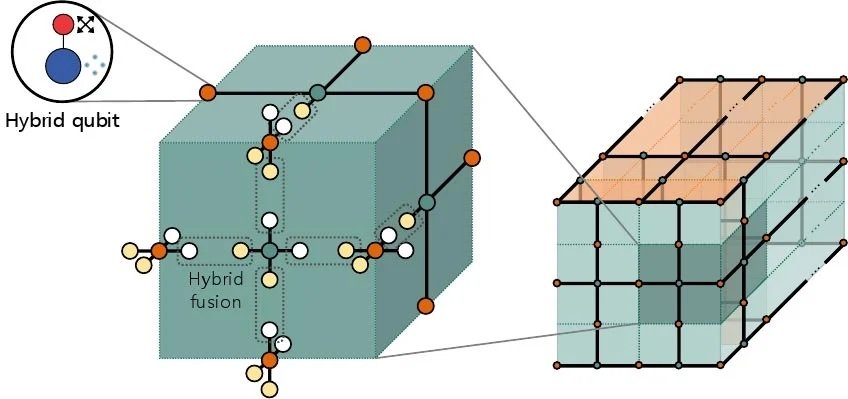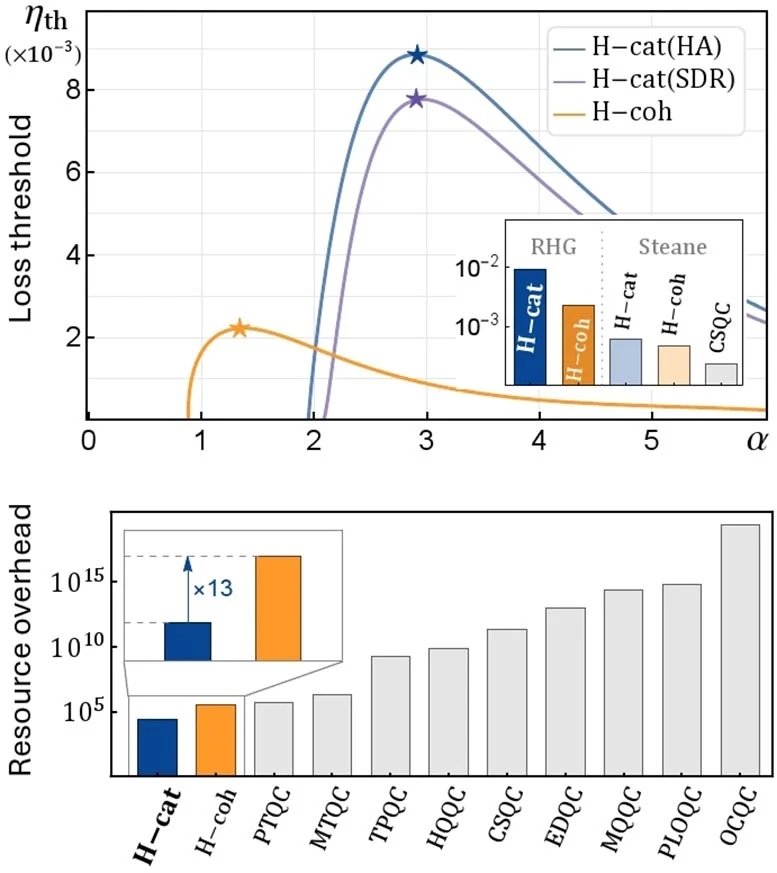Researchers have developed a groundbreaking hybrid quantum error correction technique that integrates discrete and continuous variable methods.

Researchers have developed a groundbreaking hybrid quantum error correction technique that integrates discrete and continuous variable methods.

This new approach enhances fault tolerance and efficiency in quantum computing, offering up to four times the photon loss threshold and 13 times more resource efficiency. The technique, suitable for various systems including optical, superconductors, and ion traps, marks a significant advancement in quantum computing architecture.
Quantum Error Correction
A significant challenge in realizing practical quantum computers is the development of ‘quantum error correction’ technology. This technology corrects errors in qubits—the fundamental components of quantum computing—preventing the errors from worsening during computations. Without this correction, quantum computers will not be able to surpass the performance of traditional computers, and therefore efforts to advance this technology are ongoing worldwide.

Pioneering Hybrid Techniques in Quantum Computing
At the Korea Institute of Science and Technology (KIST), Dr. Seung-Woo Lee and his team at the Quantum Technology Research Center have pioneered the world’s first hybrid quantum error correction technique. This new method works with both discrete variables (DV) and continuous variables (CV), forming the basis for a fault-tolerant quantum computing architecture.
Quantum error correction is implemented using logical qubits, which come in two forms: DV and CV. Major tech companies like IBM, Google, Quera, and PsiQuantum are focusing on the DV approach, while others, including Amazon (AWS) and Xanadu, prefer using CV. Each method has its own set of strengths and weaknesses, particularly in terms of complexity and the efficiency of resource usage.
Advancements in Fault-Tolerant Quantum Architectures
KIST researchers have proposed a method to integrate the error correction of DV and CV qubits, which were previously developed separately. They developed a fault-tolerant architecture based on the hybrid technology and demonstrated through numerical simulations that it combines the advantages of both methods, enabling more efficient and effective quantum computation and error correction. In particular, in optical quantum computing, the hybrid approach can achieve the photon loss threshold up to four times higher than existing techniques and can improve the resource efficiency by more than 13 times while maintaining the same level of logic error rate.

Implications for Future Quantum Computing Technologies
“The hybrid quantum error correction technology developed in this study can be combined not only with optical systems but also with superconductors and ion trap systems,” said Dr. Jaehak Lee of KIST. “This research provides a new direction for the development of quantum computing,” said Dr. Seung-Woo Lee of KIST, who led the research. “Hybrid technologies that integrate the advantages of different platforms are expected to play a crucial role in developing and commercializing large-scale quantum computers.”
Strategic Collaborations Enhance Quantum Research
KIST signed a memorandum of understanding (MOU) with the University of Chicago in March last year to collaborate on quantum technology research, involving both institutions and Seoul National University. The researchers announced this important achievement in just over a year through international research collaboration, showing the potential to develop core technologies that will lead the world in the highly competitive field of quantum computing. KIST is hosting an international collaborative research center for the development of core technologies for quantum error correction, with partner institutions including the University of Chicago, Seoul National University, and Canadian quantum computing company Xanadu.
Reference: “Fault-Tolerant Quantum Computation by Hybrid Qubits with Bosonic Cat Code and Single Photons” by Jaehak Lee, Nuri Kang, Seok-Hyung Lee, Hyunseok Jeong, Liang Jiang and Seung-Woo Lee, 2 August 2024, PRX Quantum.
DOI: 10.1103/PRXQuantum.5.030322
This research was supported by the Ministry of Science and ICT (Minister Sang-Im Yoo) under the KIST Major Project and Quantum Technology Cooperation Project (2022M3K4A1094774). The research results were published on 2 August in the international journal PRX Quantum (IF: 9.2 JCR, top 1.9%).
Type and Press enter